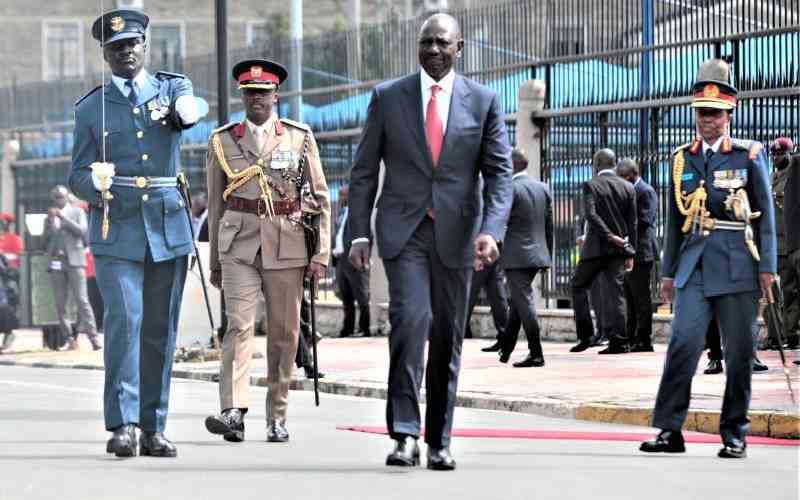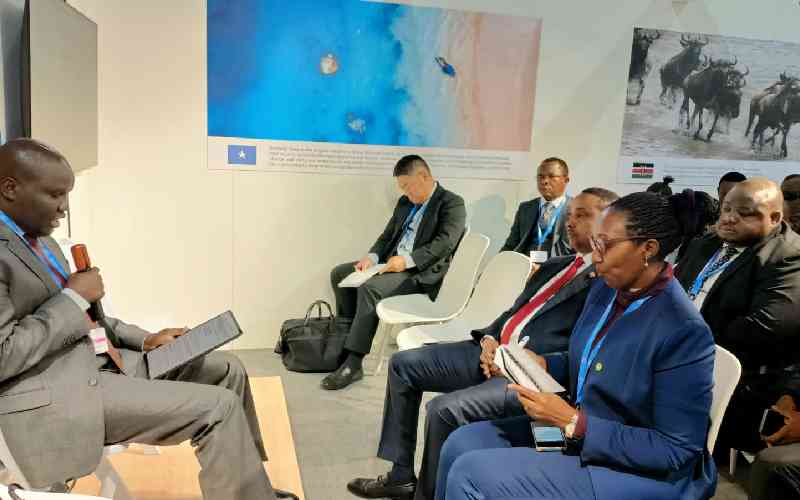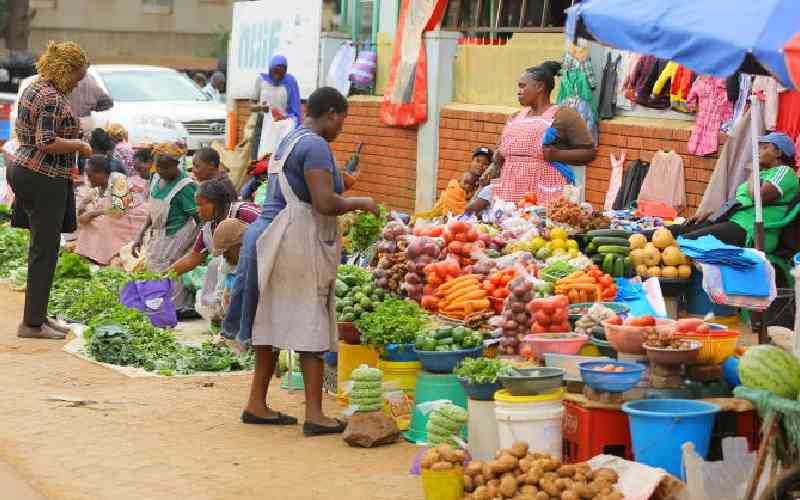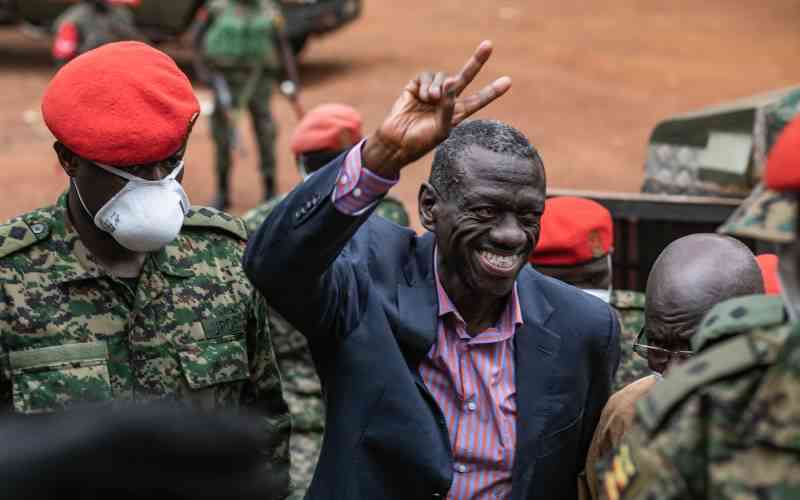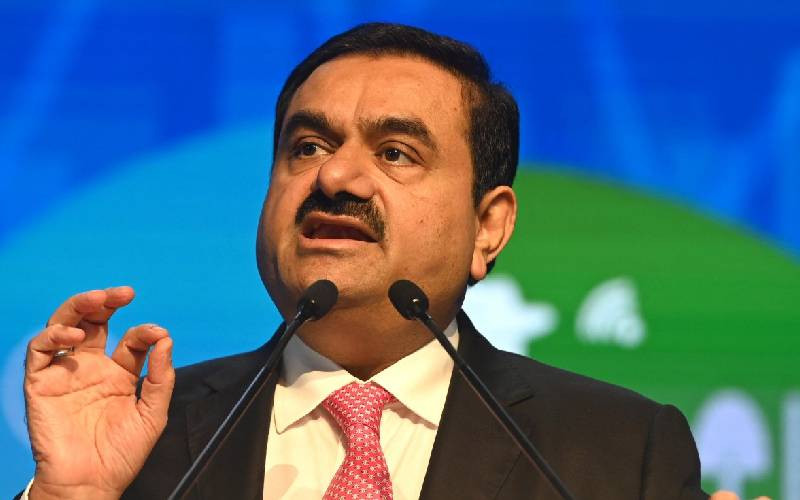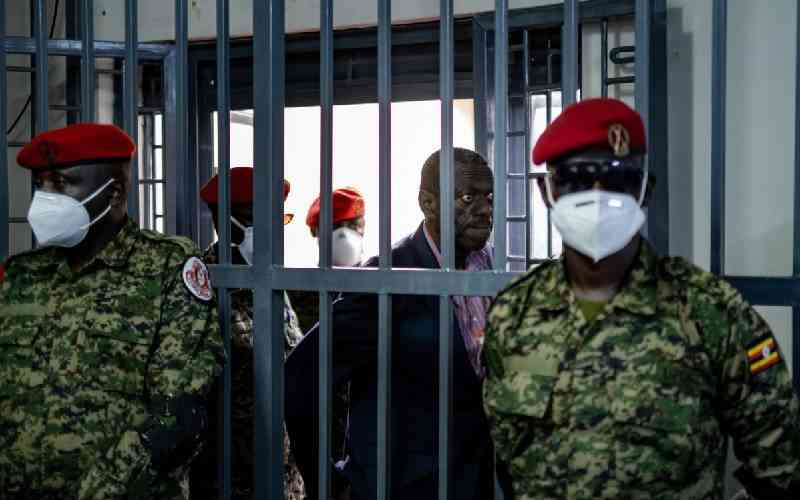 |
|
Economist Kiriro wa Ngugi at a forum on the standard gauge railway project Wednesday in Nairobi. The meeting discussed strengths, weaknesses, opportunities and threats to the venture. [PHOTO: GEORGE NJUNGE/STANDARD] |
By Isaac Meso and Macharia Kamau
Kenya: Economists have dismissed the construction of the standard gauge railway (SGR) line, arguing that the multibillion shilling project does not make economic sense.
The project, which is already under scrutiny over its controversial procurement process, is said to be too costly. The economists argued the Government should have refurbished the current metre gauge railway.
It is estimated that the SGR will cost Sh327 billion compared to refurbishing the current metre gauge railway that would have cost Sh20 billion. Economists David Ndii and Kiriro wa Ngugi said yesterday during a forum in Nairobi on the railway, that an upgraded metre gauge line would have given a similar performance as the SGR.
The Ministry of Transport hopes to transfer cargo from road to the SGR. The goods would move at 80km per hour and passengers at 120km per hour, which according to the economists can be achieved by refurbishing the current railway.
Their sentiments are in line with a recent World Bank report that noted the SGR does not have an economic case in East Africa.
“The metre gauge rail built for heavy duty performance can do as good as standard gauge. It can move a significant load of cargo from the roads to rail at speeds of 80km/hr, which is what is expected of the standard gauge,” said Ngugi.
Meeting under the auspices of Ufungamano, a forum of religious organisations, the two economists further noted that the high costs would make it unlikely for the project to go from Mombasa past Nairobi. The new line is expected to go to Malaba, then to Kampala and Kigali, terminating in Eastern DR Congo. As it stands, however, Uganda and Rwanda have not started working on the railway.
Currently, only the cost of the Mombasa-Nairobi segment is known, with the Transport ministry saying it will soon do a feasibility study on the Nairobi-Malaba segment.
External loans
“It is highly unlikely that it will go beyond Nairobi. The cost will not allow it to go the other half (between Nairobi and Malaba),” said Ndii.
He added that the country would end up with a railway running parallel to the metre gauge, which is already paid for and hence cheaper to use.
“If the two were to compete, which is a likely scenario given that there may not be enough cargo for both lines, the metre gauge might be cheaper and the standard gauge might remain unused.”
He noted the project would impact heavily on the country’s foreign debt status, to a point of making it unsustainable. Kenya’s foreign debt currently stands at Sh900 billion, which means financing from the Exim Bank of China, at over Sh300 billion, would increase this by a third.
According to Ndii, this would hamper Kenya’s efforts to borrow externally, including floating the much-talked about sovereign bond. “Our ability to borrow would be significantly compromised and it might mean borrowing at higher interest rates,” he said.
Stay informed. Subscribe to our newsletter
“The consequences of the project will outlive the (Jubilee) Government for many years. The terms of the borrowing, including the interest rate and the currency in which the loan will be issued and the grace period are not clear,” he added.
The project has faced hurdles since President Uhuru Kenyatta broke ground in November last year, with many experts questioning the awarding of the contract to China Road and Bridge Corporation. Other than the tendering process, the capacity of the company has also been questioned. The World Bank blacklisted the firm.
“There is no economic or financial case for the standard gauge in the East African Community at this time… There is no rationale, economic or otherwise, to do this project. A refurbished metre gauge would appear to be the most appropriate option in economic and financial terms and could easily accommodate forecast traffic for up to 2030, with lower investment requirements,” said the World Bank report.
In addition to high costs, the SGR may face severe competition from a planned cargo transit route that will move cargo between Kenya and Egypt. Citadel Capital, a shareholder at Rift Valley Railways, said in December last year it would create a route connecting East African countries to Egypt through South Sudan and Sudan.
Cargo moving on the route will use different railway lines running across these countries as well as over the River Nile, where the company operates a shipping line.
The new route could offer a speedier mode of moving goods within the Comesa trading bloc. It could also serve as an alternative route for exporters and importers into East Africa, especially those moving goods to and from Middle East and Europe.
The route could also be ideal for Kenyan tea destined for Egypt and offer competition to the SGR. It would also offer competition to the planned Lamu Port-South Sudan-Ethiopia Transport corridor, where a pipeline, road and railway are expected to link the three countries.
 The Standard Group Plc is a
multi-media organization with investments in media platforms spanning newspaper
print operations, television, radio broadcasting, digital and online services. The
Standard Group is recognized as a leading multi-media house in Kenya with a key
influence in matters of national and international interest.
The Standard Group Plc is a
multi-media organization with investments in media platforms spanning newspaper
print operations, television, radio broadcasting, digital and online services. The
Standard Group is recognized as a leading multi-media house in Kenya with a key
influence in matters of national and international interest.
 The Standard Group Plc is a
multi-media organization with investments in media platforms spanning newspaper
print operations, television, radio broadcasting, digital and online services. The
Standard Group is recognized as a leading multi-media house in Kenya with a key
influence in matters of national and international interest.
The Standard Group Plc is a
multi-media organization with investments in media platforms spanning newspaper
print operations, television, radio broadcasting, digital and online services. The
Standard Group is recognized as a leading multi-media house in Kenya with a key
influence in matters of national and international interest.



